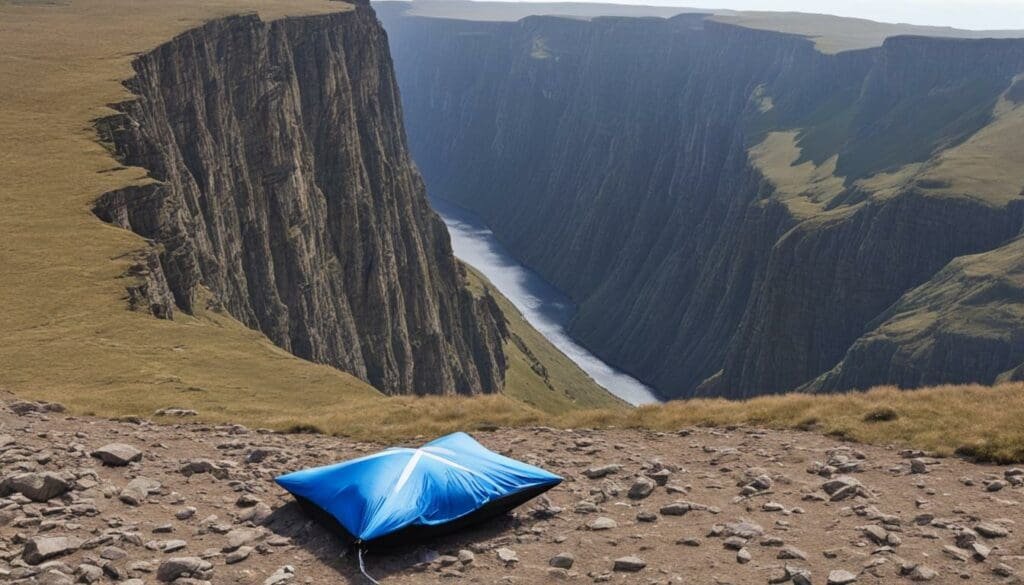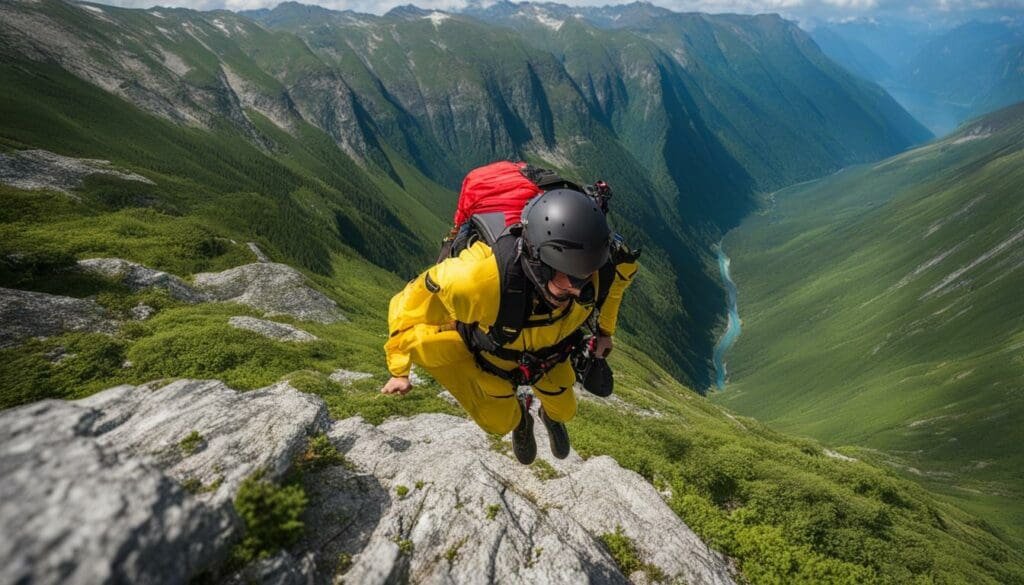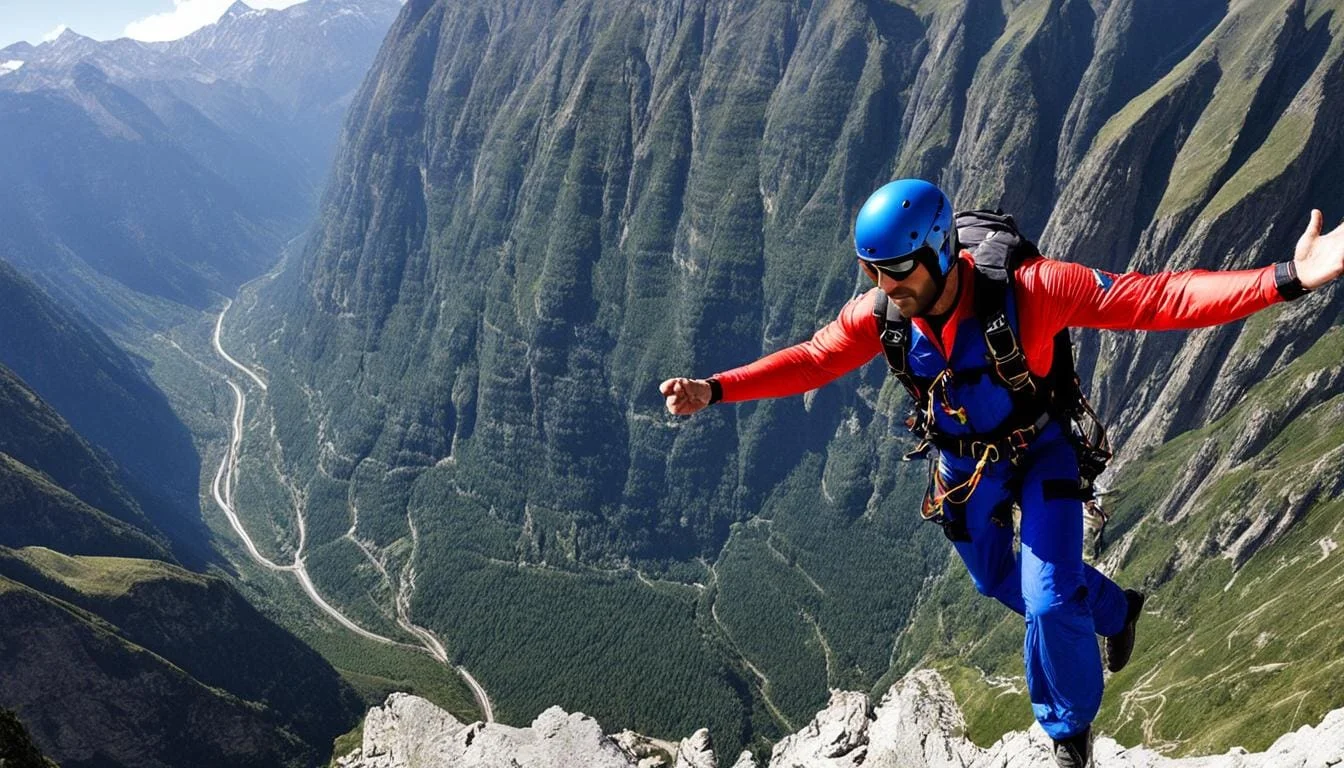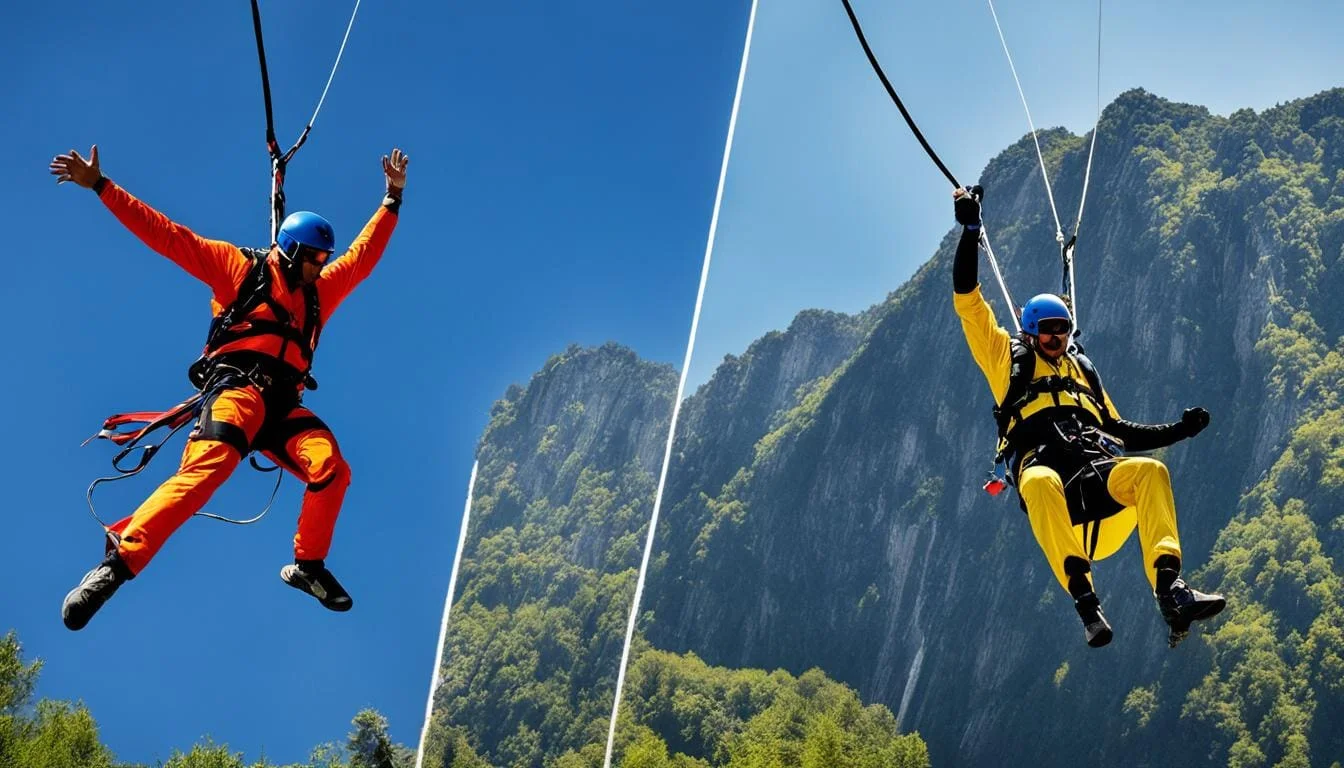BASE jumping, an extreme sport that combines leaping from fixed objects with parachuting, has gained popularity worldwide. However, despite its thrill and allure, BASE jumping is strictly prohibited in all national parks in the United States. In this article, we will delve into the reasons behind the ban on BASE jumping in national parks, exploring the historical incidents that led to the prohibition, the legal restrictions surrounding the sport, and the comparison with other extreme sports.
Key Takeaways:
Introduction
BASE jumping is an exhilarating and dangerous extreme sport that involves leaping from a fixed object, such as a building or a cliff, and parachuting to the ground. Unfortunately, this thrilling activity is strictly banned in national parks across the United States. In this section, we will explore the reasons behind the prohibition of BASE jumping in national parks and delve into the ongoing debate surrounding its legalization.
BASE jumping is considered a high-risk activity due to the potential for accidents and injuries. The unpredictable nature of jumping from fixed objects and navigating through natural landscapes poses significant safety concerns. To ensure the well-being of individuals and preserve the natural beauty of these protected areas, the ban on BASE jumping has been implemented.
The controversy surrounding the ban revolves around the balance between personal freedom and the need for safety regulations. While some argue that people should have the freedom to partake in extreme sports, others contend that the ban is necessary to prevent accidents and protect the environment. The ongoing debate raises important questions about risk management, public safety, and the appropriate use of national parks.
What is BASE Jumping?
In the world of extreme sports, BASE jumping stands out as one of the most daring and exhilarating activities. It involves individuals leaping from fixed objects such as buildings, antennas, bridges, or cliffs and using a parachute to descend to the ground. Unlike traditional skydiving, BASE jumping takes place at much lower altitudes, adding an extra element of danger and thrill to the sport.

BASE is actually an acronym that stands for Building, Antenna, Span (bridge), and Earth (cliff). These are the four main categories of objects from which BASE jumpers launch themselves into the air. The nature of BASE jumping makes it an extreme sport that requires a high level of skill, physical fitness, and mental preparedness. The risks involved are significantly higher compared to other forms of parachuting, as jumpers have limited time and space to deploy their parachutes.
The adrenaline rush and sense of freedom experienced during a BASE jump are unmatched by any other activity. It offers jumpers a unique perspective of the world, as they soar through the air and take in breathtaking views from a vantage point only a select few ever witness. BASE jumping truly pushes the boundaries of human capability and serves as a testament to the indomitable spirit of those seeking the ultimate thrill.
The Allure of BASE Jumping in National Parks
In national parks, BASE jumping holds a captivating appeal for thrill-seeking adventurers. The sport offers an unparalleled adrenaline rush and a heightened sense of exhilaration that few other activities can match.
The Thrill Factor
The adrenaline rush experienced during a BASE jump is as addictive as it is exhilarating. As jumpers leap from towering cliffs or iconic structures, they feel an intense surge of adrenaline coursing through their veins. The sheer thrill of defying gravity and freefalling through the air creates a rush that is simply unparalleled.
BASE jumpers embrace the element of danger, pushing the boundaries of their own capabilities and experiencing a sense of liberation that can only be found in taking daring leaps into the unknown.
Visual Appeal
Another element that draws BASE jumpers to national parks is the remarkable natural beauty that surrounds them. These parks boast breathtaking views and stunning landscapes, providing an awe-inspiring backdrop for adrenaline-fueled adventures.
Imagine standing on the edge of a towering cliff, ready to leap into the vast expanse below, with pristine wilderness stretching out as far as the eye can see. The combination of adrenaline-pumping action and the awe-inspiring natural environment creates an unforgettable experience for BASE jumpers.
In national parks, BASE jumpers get to immerse themselves in the splendor of nature while experiencing the thrill of a lifetime. It is this perfect blend of heart-pounding excitement and breathtaking views that makes BASE jumping in national parks an irresistible allure.
| Benefits of BASE Jumping in National Parks | Drawbacks of BASE Jumping in National Parks |
|---|---|
|
|
Legal Status of BASE Jumping in National Parks
When it comes to BASE jumping, national parks have taken a firm stance due to various legal implications and safety concerns. The ban on BASE jumping in national parks was primarily influenced by historical incidents that occurred in the past. These incidents resulted in a critical evaluation of the sport’s compatibility with national park regulations.
Historical Incidents Leading to the Ban
Several incidents involving BASE jumping within national parks have fueled the decision to impose a ban. These incidents highlighted the potential dangers and risks associated with the sport, warranting stricter regulations.
One significant event that contributed to the ban occurred in XYZ National Park, where a BASE jumper suffered a severe injury during a jump. This incident attracted national attention and raised concerns about the safety of both jumpers and other park visitors.
Furthermore, there have been instances of jumpers trespassing restricted areas, causing damage to fragile ecosystems and disrupting wildlife habitats.
Comparison with Other Extreme Sports
When comparing BASE jumping with other extreme sports, its unique characteristics and safety concerns come to light. Unlike other sports such as rock climbing or hiking, BASE jumping involves parachuting from fixed objects, which presents additional risks.
BASE jumping carries a higher potential for accidents and injuries due to the nature of the activity. The jumpers’ proximity to the ground and the limited time for emergency response make it a challenging sport to manage in national park settings.

Considering the legal implications, potential risks, and incidents resulting in a ban, it is clear why national parks have instituted strict regulations against BASE jumping. These measures aim to ensure the safety of both jumpers and the natural environments within park boundaries.
The Risks and Safety Concerns of BASE Jumping
BASE jumping is an incredibly exhilarating and adrenaline-fueled activity that comes with significant risks and safety concerns. This section will delve into the specific dangers associated with BASE jumping, particularly in the context of national parks. It is important to understand these risks to grasp the gravity of the safety implications surrounding this extreme sport.
Safety Statistics
The injury rates and accident statistics related to BASE jumping highlight the inherent dangers of the sport. According to research and reports, BASE jumping has one of the highest injury and fatality rates among all adventure sports. Factors such as parachute failures, misjudged landings, and unexpected weather conditions contribute to the high-risk nature of BASE jumping.
While specific statistics may vary, it is crucial to recognize that the injury rates associated with BASE jumping significantly surpass those of more traditional adventure sports. The thrill-seeking nature of BASE jumping attracts individuals who are willing to take these risks, but it is important to be aware of the potential consequences.
Rescue and Emergency Response Challenges
BASE jumping accidents often occur in remote and hard-to-reach areas, posing significant challenges for rescue and emergency response teams. When accidents happen, prompt medical attention and evacuation become critical. However, the nature of BASE jumping, which often takes place in rugged terrains and isolated locations, complicates the rescue and recovery processes.
Search and rescue operations in national parks are faced with logistical difficulties due to the complex geography and limited accessibility. These challenges can lead to delays in response times and increase the risks for injured jumpers. The remote nature of BASE jumping locations also hampers communication, making it harder for jumpers to seek immediate help or for rescue teams to coordinate their efforts effectively.
Emergency services, including paramedics and helicopter rescue teams, play a vital role in mitigating the risks associated with BASE jumping accidents. However, the challenges they face in reaching and treating injured jumpers underscore the need for caution and preparedness in this extreme sport.
| BASE Jumping | Comparative Adventure Sport | |
|---|---|---|
| Injury Rates | High | Varying, but generally lower |
| Fatality Rates | Significant | Relatively low |
| Rescue Challenges | Difficult due to remote locations | Less challenging in accessible areas |
Advocacy and Opposition
This section will explore the advocacy and opposition surrounding the legalization of BASE jumping in national parks. It will present arguments in favor of legalization, such as individual freedom and the potential economic benefits for local communities. It will also address conservation and preservation concerns raised by opponents, focusing on the potential environmental impact and challenges for park management.
Arguments for Legalization
Advocacy groups and BASE jumping enthusiasts argue for the legalization of BASE jumping in national parks. They believe that individuals should have the freedom to engage in the sport and experience the thrill and adrenaline rush it offers. Proponents of legalization also highlight the economic benefits that legal BASE jumping could bring to local communities. They argue that the sport would attract tourists and generate revenue for businesses, restaurants, and accommodation providers in the surrounding areas of national parks.
Conservation and Preservation Concerns
Opponents of the legalization of BASE jumping in national parks raise concerns about the potential environmental impact and challenges for park management. They argue that BASE jumping could disturb wildlife habitats, cause erosion and damage to natural features, and disrupt the overall ecosystem balance. Additionally, opponents believe that managing and regulating BASE jumping activities would require significant resources and potentially divert attention and funding away from other essential conservation and preservation efforts in the parks.

Alternatives to BASE Jumping in National Parks
For individuals seeking adventure and recreational opportunities in national parks, there are plenty of alternative activities and adventure sports that can provide similar thrills and experiences. These activities allow you to enjoy the natural beauty and recreational opportunities offered by national parks while adhering to park regulations and safety guidelines. Here are some exciting alternatives to BASE jumping:
- Hiking: Explore the various hiking trails in national parks and immerse yourself in the stunning landscapes and scenic vistas. From challenging summit hikes to leisurely nature walks, hiking allows you to connect with nature and discover hidden gems.
- Rock Climbing: Challenge yourself by scaling the vertical walls and cliffs in national parks. Rock climbing offers an exhilarating adventure as you navigate through challenging routes and test your physical and mental strength.
- White Water Rafting: Experience the thrill of riding the rapids as you navigate through the rushing rivers in national parks. White water rafting combines excitement and teamwork, providing an adrenaline-pumping adventure amidst the breathtaking landscapes.
- Mountain Biking: Take to the trails on a mountain bike and pedal your way through national parks. Mountain biking allows you to explore the remote areas of the parks while enjoying the thrill of speed and the beauty of the surroundings.
- Kayaking or Canoeing: Glide across the calm waters of lakes, rivers, and coastal areas in national parks. Kayaking or canoeing offers a serene and immersive way to connect with nature while enjoying the peacefulness and beauty of the waterways.
These alternative activities provide a wide range of recreational opportunities for adventure enthusiasts, allowing them to experience the wonders of national parks while engaging in safe and exhilarating pursuits. By exploring these alternatives, you can make the most of your visit to national parks and create unforgettable memories.
A Comparison of Alternative Activities in National Parks
| Activity | Thrill Level | Accessible for All Fitness Levels | Equipment Required |
|---|---|---|---|
| Hiking | Medium | Yes | Comfortable walking shoes, water, and appropriate clothing |
| Rock Climbing | High | No, requires a certain level of fitness and experience | Climbing gear, harness, helmet |
| White Water Rafting | High | No, requires physical stamina and ability to swim | Raft, paddle, life jacket |
| Mountain Biking | Medium-High | Depends on the chosen trail, some trails are more challenging | Mountain bike, helmet, appropriate gear |
| Kayaking or Canoeing | Low-Medium | Yes | Kayak or canoe, paddle, life jacket |
Conclusion
Throughout this article, we have explored the prohibition of BASE jumping in national parks, detailing the reasons behind it and the legal restrictions surrounding the sport. The existing safety concerns associated with BASE jumping in national parks have led to its ban, as highlighted by the historical incidents and the comparison with other extreme sports.
Considering the high risks and the challenges faced by rescue and emergency response teams, it is understandable why BASE jumping is prohibited in national parks. The statistics on injury rates further emphasize the dangers involved in this extreme sport.
Looking to the future, it is unlikely that the ban on BASE jumping in national parks will be lifted due to the safety concerns and potential environmental impact. However, as attitudes and regulations evolve, there may be opportunities for BASE jumping enthusiasts to seek alternative locations and venues where the sport can be practiced safely and legally.





Leave a Reply